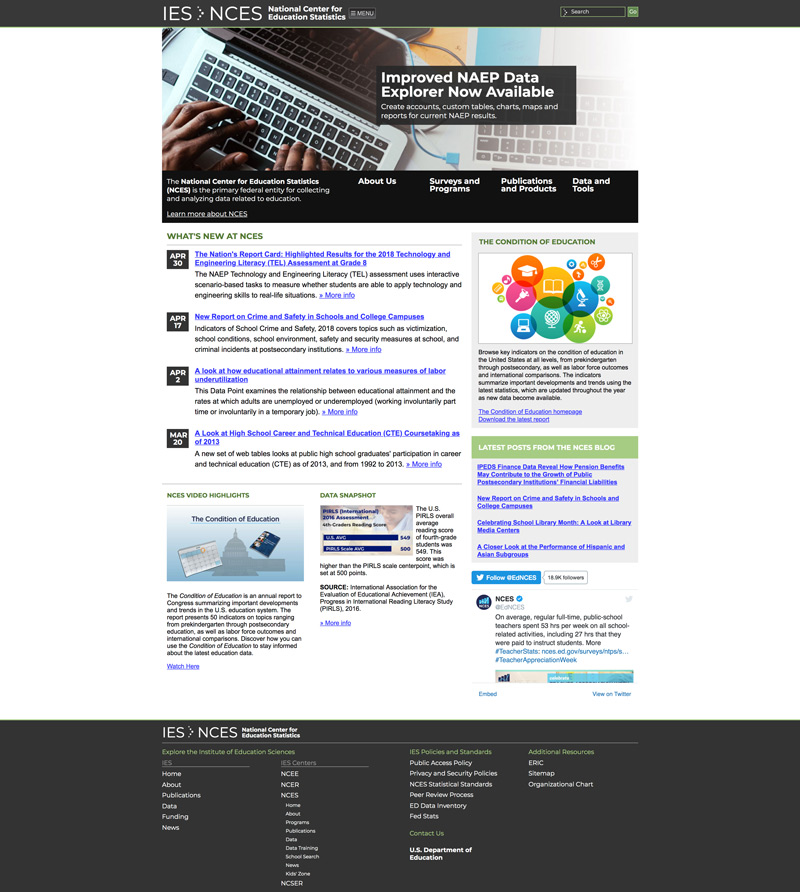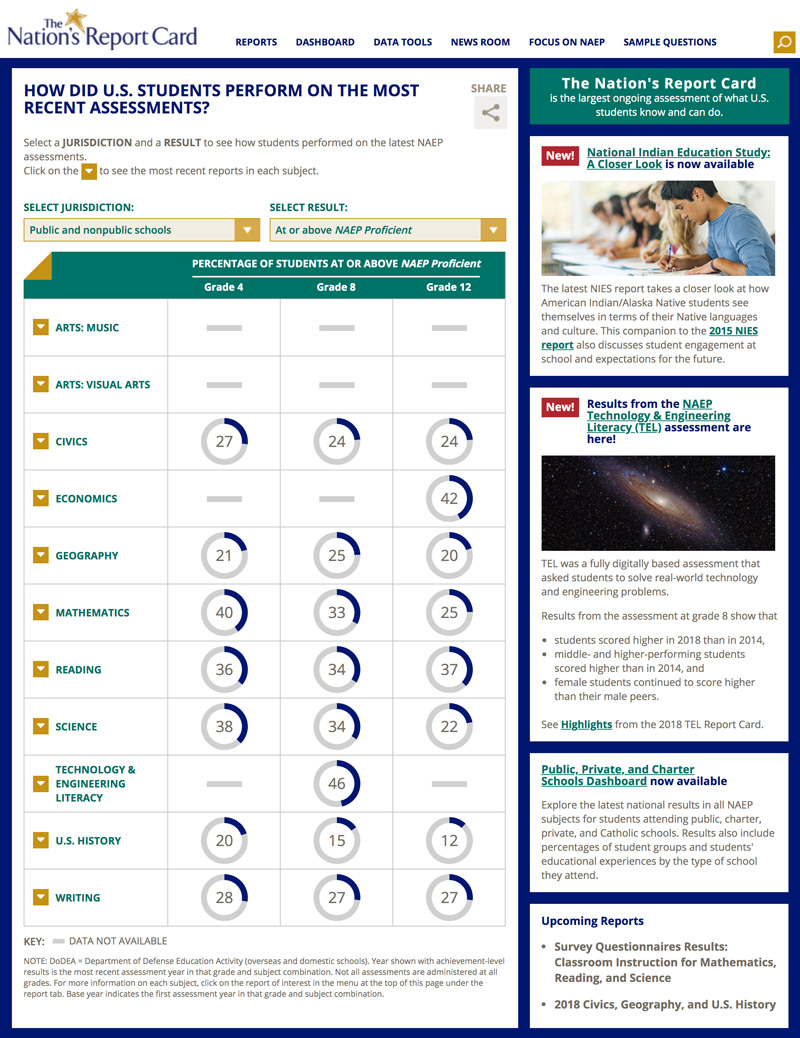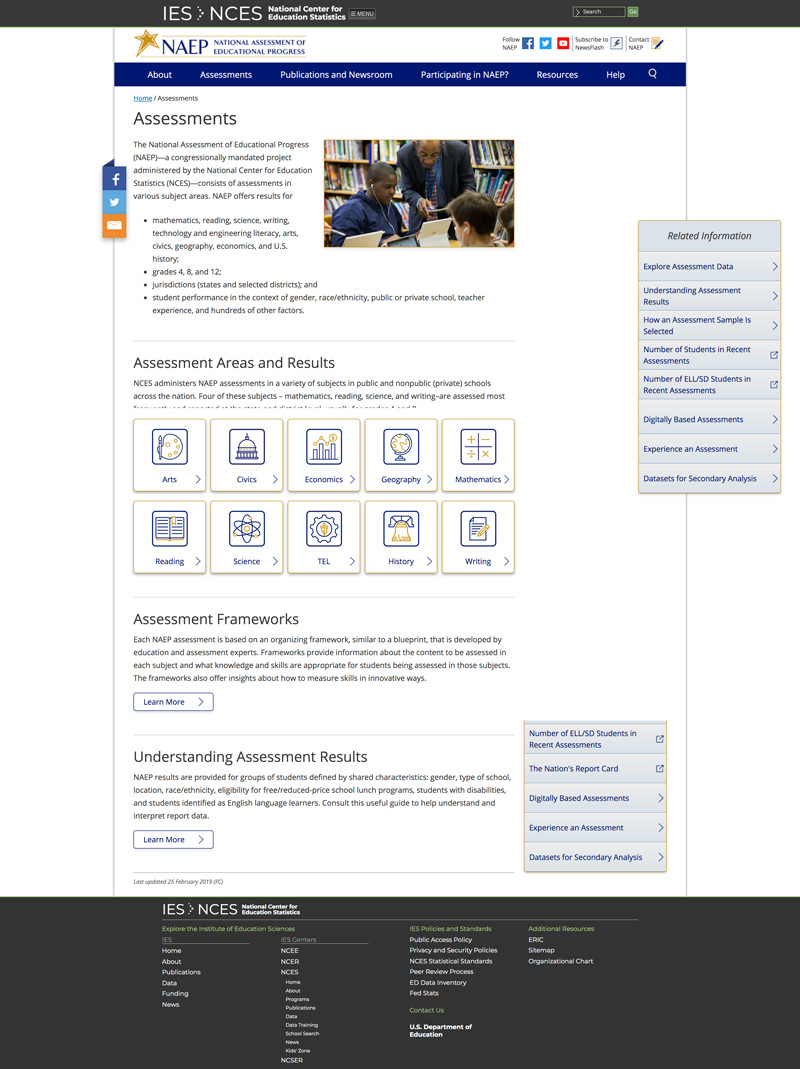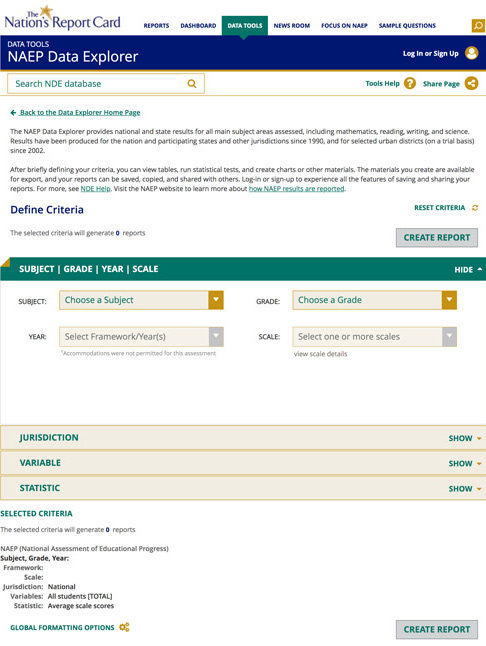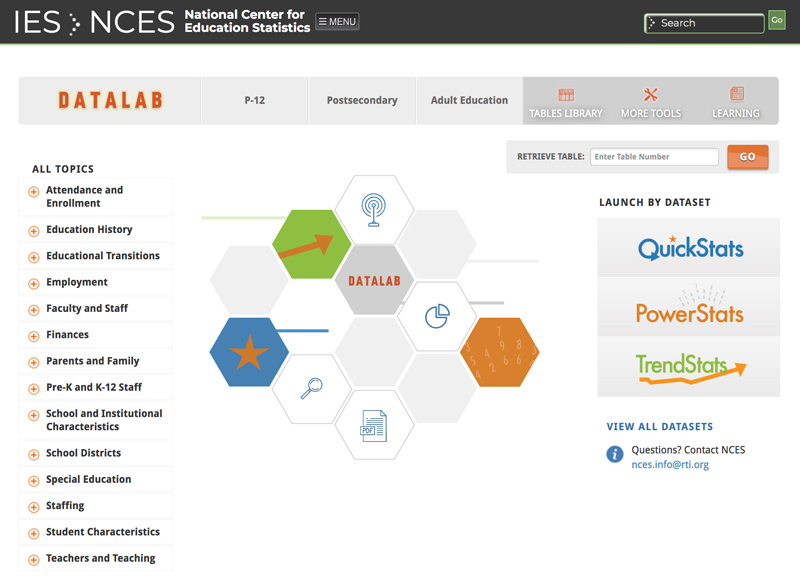Sources for education data
Where do you go for educational data and what kind of data can you find?
Rebecca Goldin Ph.D.
May 20, 2019
Photo credit: Drew Bloksberg for istockphoto.com
National Center for Education Statistics (NCES)
The NCES is the primary U.S. repository for a wide range of federal and international educational data and analysis.
One of the most important surveys conducted by the NCES is the National Assessment of Educational Progress (NAEP). Launched in 1969, NAEP measures student performance in a range of subjects at grades 4, 8, and 12. The results of these surveys are published as the The Nation’s Report Card
The NAEP assesses reading, math, science, and writing at the national, state and on some local levels. It also assesses national progress in Arts, Civics, Geography, Economics, U.S. History, and Technology and Engineering Literacy. NAEP focusses heavily on public schools, though it also has national data on private school children.
There are multiple pathways to finding NCES data. You can click on these images to go to these pages to explore further.
The NCES website is a gateway to a vast range of educational data.
The Nation’s Report Card summarizes the latest results of the NAEP.
The NAEP assessment page allows you to explore results through subject area.
You can do customizable searches using the NAEP Data Explorer.

